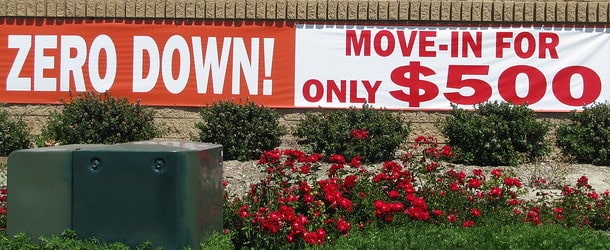Past Ginnie Mae president Ted Tozer has argued that the FHA should lower or completely eliminate its current 3.5% down payment requirement.
He discussed the controversial take during a Community Home Lenders of America Roundtable in Washington, D.C. earlier this week, per Inside Mortgage Finance.
This isn’t the first time he’s floated the idea of turning the FHA home loan program into a zero-down-payment program.
In the past while arguing this same position, he noted that the Bush administration even proposed such a change all the way back in 2004.
The question is does this invite more risk at a time when home prices and mortgage rates are already out of reach for most?
Most FHA Loan Borrowers Need a Minimum 3.5% Down Payment
At the moment, FHA loan borrowers need to scrounge up 3.5% of the purchase price when buying a home, assuming they have a 580 FICO score.
Those with scores between 500 and 579 need at least a 10% down payment.
While this is seemingly a pretty low bar, it still acts as a roadblock for many prospective home buyers, especially low-income borrowers with little savings.
According to a semi-recent Federal Reserve study, the average American household had about $42,000 in savings.
But if you break it down by age, those under 35 only had $11,250 and those 35 to 44 only about $28,000.
A home purchase, even with a small down payment, could easily wipe out these accrued savings. And remember that these numbers are an average.
Many households have much less, which is why they’re probably still renting if their desire is to own.
Tozer has argued that after accounting for rent, taxes, food, utilities, and other necessities, prospective first-time home buyers have little left to save for a down payment.
The FHA Minimum Down Payment Was Increased in 2009
If you recall, the FHA Modernization Act of 2008 resulted in the FHA minimum down payment rising from 3% to 3.5%.
It also banned seller-funded down payment assistance, which correlated with much higher default rates on FHA loans.
Ironically, these types of loans resulted in a near-$5 billion loss for the FHA and put the entire program at risk.
Around that time, some lawmakers argued for even higher down payment requirements, such as a minimum of 5% down. That didn’t happen.
Back then, the big argument was about having skin in the game, as those with little invested had no problem walking away from an underwater mortgage.
That’s why the timing of this idea is a bit of a head-scratcher, with home prices at/near all-time highs and mortgage rates more than double their early 2022 levels.
While it isn’t quite 2006 all over again, there has been a lot of speculation in the housing market and prices are certainly not cheap.
The saving grace is that most homeowners hold boring old 30-year fixed-rate mortgages at ultra-low rates this time around.
And zero down loans are generally few and far between, other than homebuyer assistance offered by some state housing finance agencies (HFAs).
What’s the Argument for a 0% FHA Loan Today?
At the moment, you need a minimum 3.5% down payment to obtain an FHA loan, slightly more than the minimum 3% required on conventional loans.
Interestingly, you used to need 5% down to get a conventional loan before they introduced 97% LTV offerings in 2014.
This 3.5% is also significantly higher than what’s required for other government-backed home loans.
Tozer pointed out that both VA loans and USDA loans don’t require a down payment (100% financing OK!).
The thing is those loans are reserved for members of the military or those buying in rural areas, respectively. Conversely, FHA loans are much more widely available.
Regardless, he argues that underwriting should focus on a borrower’s credit history as opposed to the down payment.
But if we recall from the prior mortgage crisis, credit scores got a big share of the blame for the sharp rise in defaults.
So relying on credit score alone might not be the best policy either. While defaults certainly rise as credit scores fall, a holistic approach is best when formulating underwriting standards.
This means looking at layered risk, such as credit score, down payment, DTI ratio, employment history, and more.
The Skin in the Game Is the Cost to Relocate
As for skin in the game at zero down payment, Tozer said the skin is the cost to move.
In other words, once low- and moderate-income homeowners move in, it would cost them way too much to relocate.
And this is apparently what would keep them there. While that might be true, would they continue making payments?
Tozer’s proposal is unlikely to materialize as it would require Congress to act at a time when housing supply is already dismal and affordability historically low.
However, there is other proposed legislation that would offer 100% financing to first responders who need a mortgage, via the HELPER Act of 2023.
In the meantime, other options already exist to get an FHA loan with zero down.
As noted, many state HFAs have programs that offer deferred-payment junior loans that cover the down payment and even the closing costs.
There are also private lenders that offer FHA with zero down, such as the Movement Boost from Movement Mortgage, which relies on a repayable second mortgage.
So options already exist without the need for an across-the-board elimination of the FHA’s down payment requirement.

